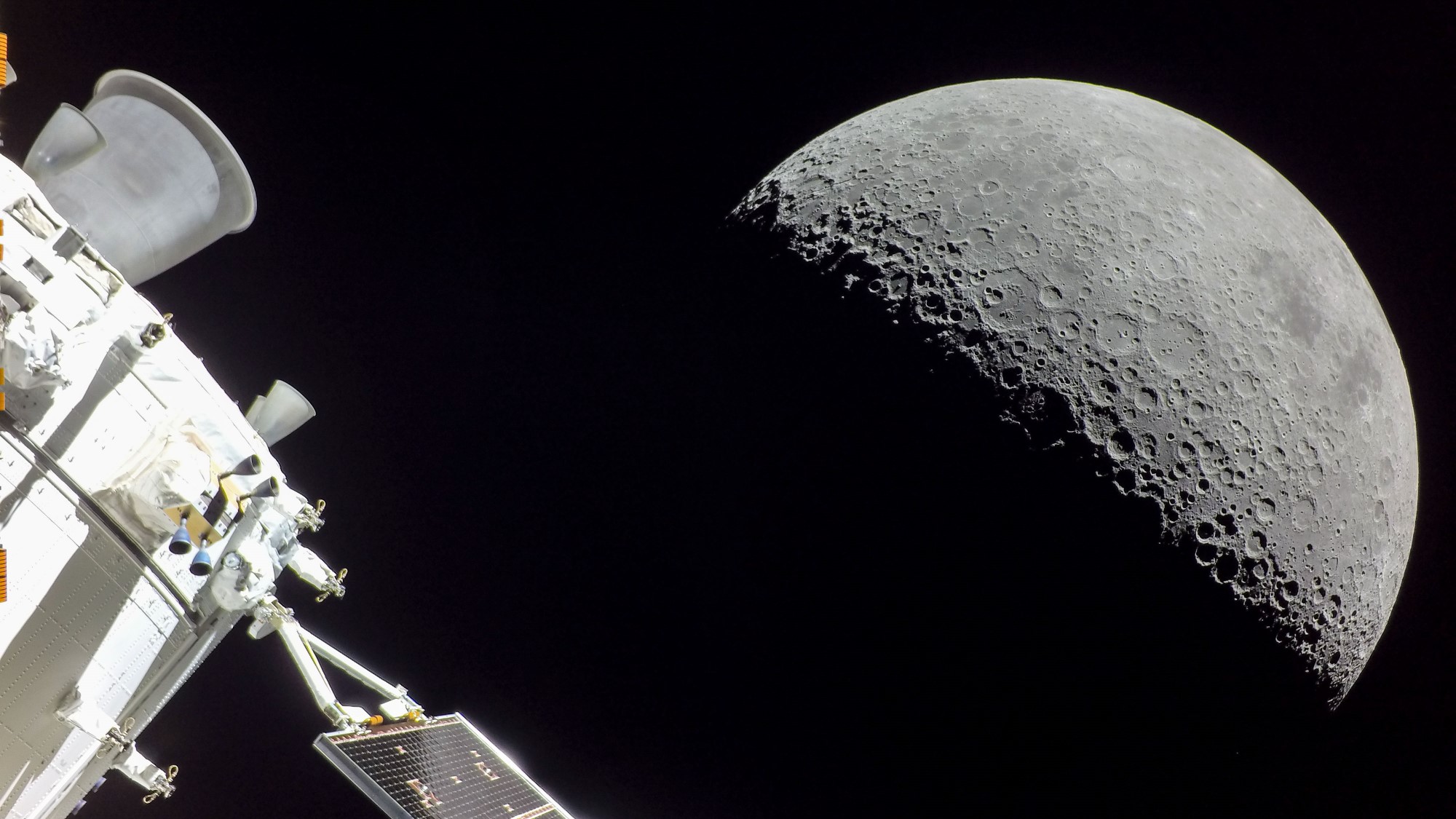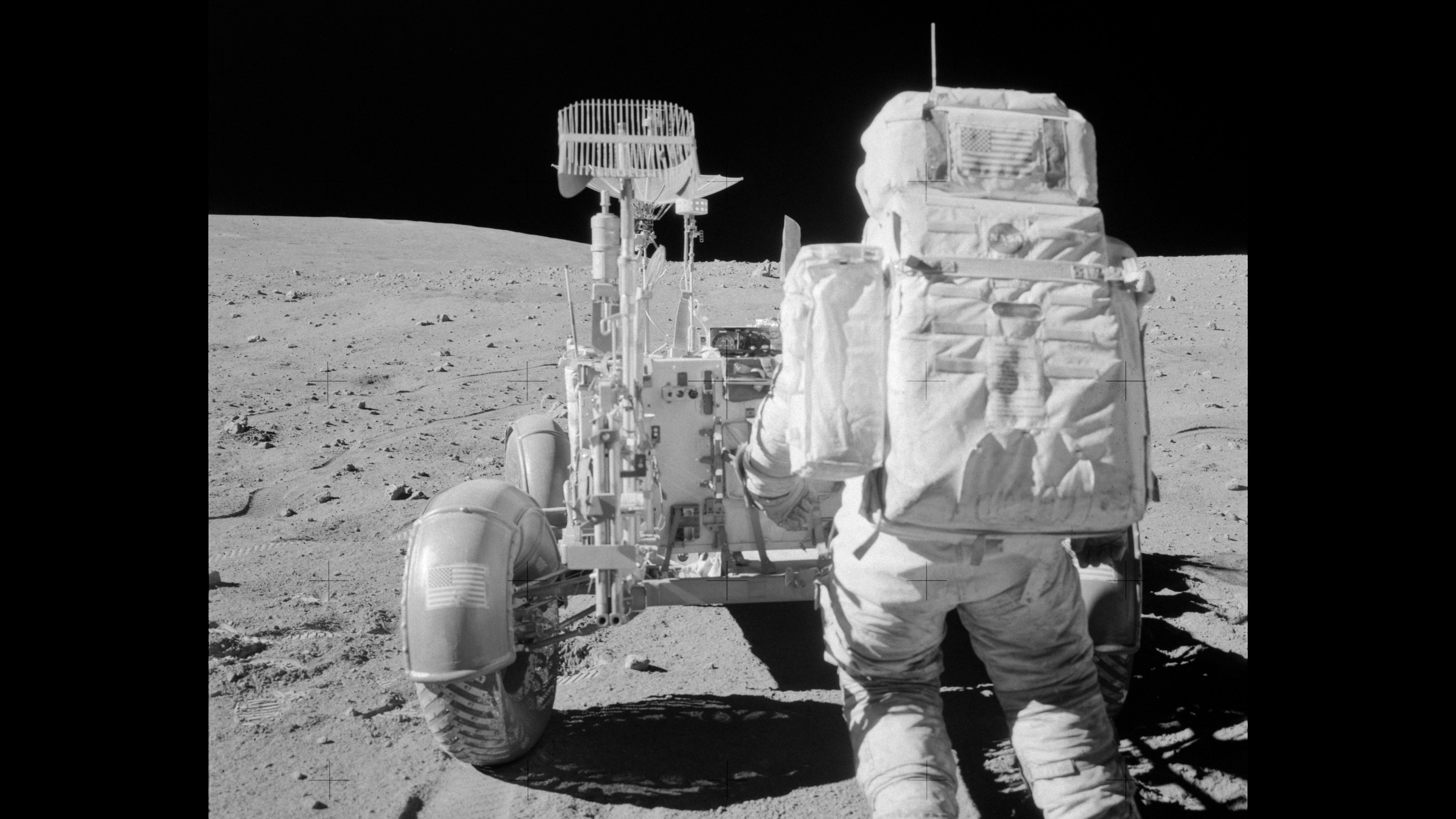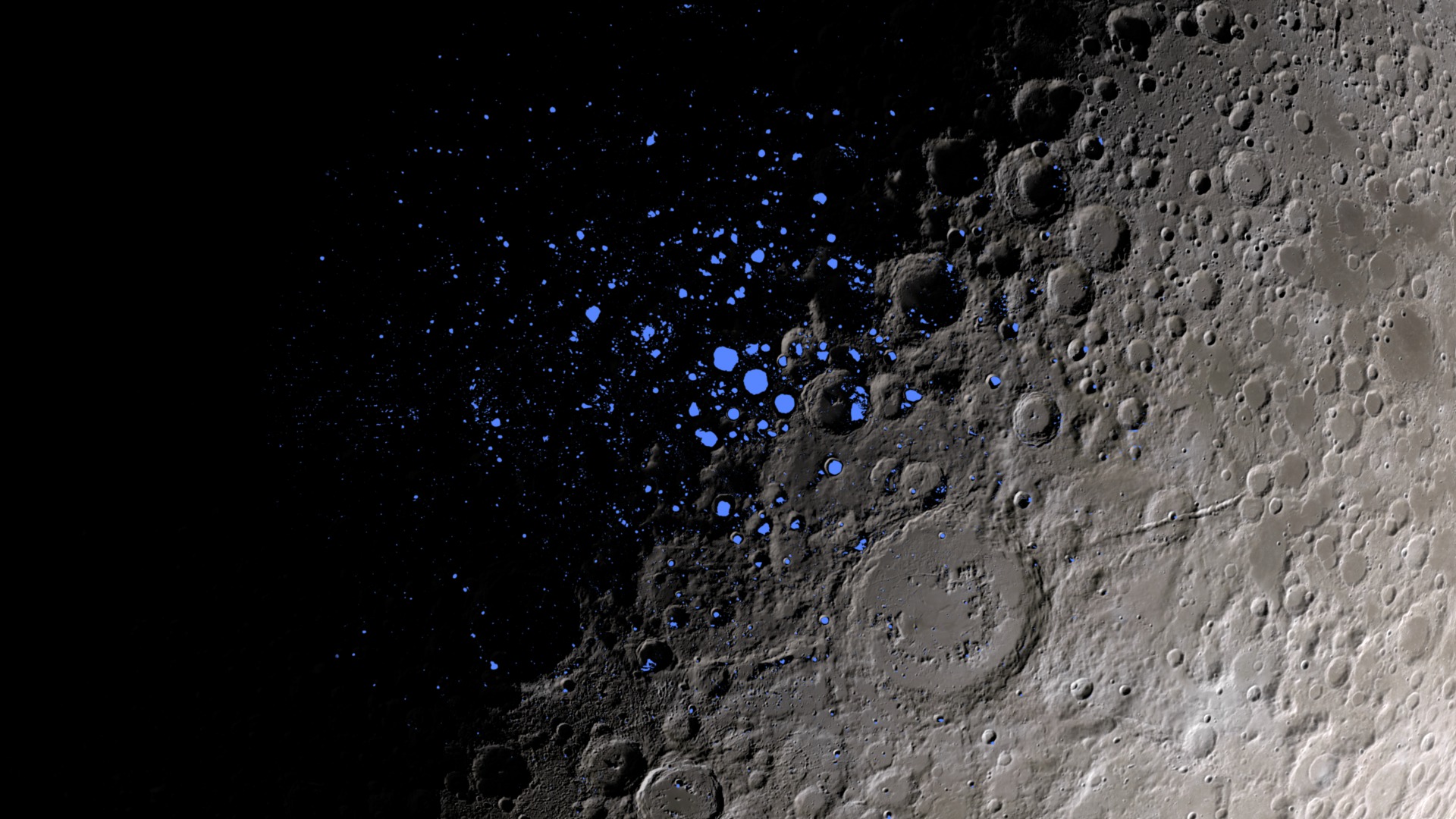Moon scientists hail Artemis opportunities while still learning from Apollo

It's been half a century since humans last retrieved samples of the moon's surface, and we're finally going back — with better technology, too.
With the successful Artemis 1 test flight in December and 50 years after the final Apollo lunar mission in 1972, astronomers and space enthusiasts alike are buzzing with excitement about humanity's return to the moon. Planetary scientists, however, are particularly eager for the science will come from future crewed Artemis missions and complementary robotic explorers. At the 2022 American Geophysical Union Fall Meeting in December, lunar scientists shared some of the mysteries they're pursuing using data from the Apollo program and beyond, and how Artemis will offer a more comprehensive understanding of our moon.
Although the Apollo missions were decades ago, the lunar samples returned from those voyages are still keeping scientists busy. From small glass beads to crystals formed in magma, the rocks and minerals in the Apollo samples are a prime target for geologists interested in the moon's volcanic history. The moon doesn't have active volcanoes now, but it was quite busy in its earlier years — the moon's famous "seas" known as mare are actually plains of hardened lava.
Related: The 10 greatest images from NASA's Artemis 1 moon mission
Aleksandra Gawronska, planetary scientist at Miami University in Ohio, used crystals from lunar rocks as a record of what happened in the long-ago magma. This is a technique used often by Earth geologists, which planetary scientists are now translating to the moon. And that's not where the similarities end — Gawronska told her colleagues that, based on her results, "lunar magmatic systems might mimic their terrestrial counterparts."
Apollo missions to the lunar highlands also used seismic experiments, which famously detected "moonquakes" that allowed scientists to probe the internal structure of the moon and measure the depth of the lunar soil, known as regolith, which forms as the bedrock breaks down. The Apollo observations pointed to 16-foot-deep (5 meters) soil in the dark volcanic regions known as mare, and regolith 33 feet (10 m) thick in the older, more cratered highlands. "Recent lava flows [like mare] have been exposed to fewer impacts," said Schelin Ireland, also a planetary scientist at Miami University, during another presentation. "Regolith is much thinner in these young areas."
The Apollo missions specifically targeted young, fresh craters in the highlands, though, which are pretty rare, so Ireland worries that data isn't representative of what most of the moon is actually like. Recent work she shared at the conference confirms it, indicating that much of the moon's regolith is even deeper than what the Apollo experiments observed around the few young craters astronauts have visited to date. Future missions will need to keep this in mind, and explore more diverse areas.
Breaking space news, the latest updates on rocket launches, skywatching events and more!
Speaking of future missions, one is already planned to look into a different facet of lunar geology: the moon's magnetism. Sarah Vines, planetary scientist at the Johns Hopkins Applied Physics Lab in Maryland, is working on NASA's Lunar Vertex mission, a probe and rover combo slated to launch in 2024. This project will explore magnetic rocks on the moon's surface, which are puzzling since currently the moon has no magnetic field to form them. "That's one of the big mysteries here," Vines said in a presentation. "How have these magnetic anomalies arisen, and how have they evolved over time?"
Planetary scientists are also using data from more recent lunar missions, such as the LCROSS impactor that smacked the Cabeus Crater at the lunar south pole in 2009, to find useful materials like water, hydrogen and oxygen on the moon. Most of these volatile materials exist in permanently shadowed regions (PSRs) on crater floors near the moon's poles that never see sunlight. How those materials got there (and exactly how much is there) is still a mystery, and one that astronomers are actively working on with that treasured LCROSS data.
Artemis 1 provided another tool to investigate PSRs via one of the small cubesats it ferried toward the moon. The Lunar Polar Hydrogen Mapper (LunaH-Map) is only "about the size of a large cereal box" according to Craig Hardgrove, planetary scientist at Arizona State University and principal investigator of the LunaH-Map mission. Its goal was to map hydrogen deposits at the lunar south pole, peering 3 feet (1 m) into the surface through a series of close fly-bys. Although the instrument onboard LunaH-Map is alive and well, the propulsion system is having trouble, Hardgrave told his colleagues. If the team doesn't get it restarted by mid-January, LunaH-Map may not be able to map those deposits after all.
There are many missions in the planning stages, though, so LunaH-Map is by no means our last opportunity to delve into PSRs. Another question about these strange deposits is why they aren't even larger. Some astronomers think that micrometeoroid impacts could blast off some of the ice, leaking away the contents into space. Micrometeoroids — tiny pieces of rock and other debris moving at high speeds — are also a critical danger to the safety of any crews or equipment in space, and would limit how long a spacecraft can operate undamaged on the moon.
Scientists are also designing a new instrument, the Lunar Meteoroid Monitor, or LMM, which they hope could count these impacts as part of the Artemis program. The Apollo missions gathered similar measurements, but this new project would be a significant tech upgrade. LMM would not only determine the risk of micrometeoroid impacts, but also "enable us to identify and map resources in lunar PSRs" according to Alex Doner, a planetary scientist at University of Colorado Boulder working on the project.
All of these geologic explorations are paving the way for a much better understanding of our nearest celestial neighbor. This improved knowledge of lunar structure, geology and water deposits is key for understanding both the history of our solar system and how humans might one day live on the moon.
Follow the author at @briles_34 on Twitter. Follow us on Twitter @Spacedotcom and on Facebook.

Briley Lewis (she/her) is a freelance science writer and Ph.D. Candidate/NSF Fellow at the University of California, Los Angeles studying Astronomy & Astrophysics. Follow her on Twitter @briles_34 or visit her website www.briley-lewis.com.


